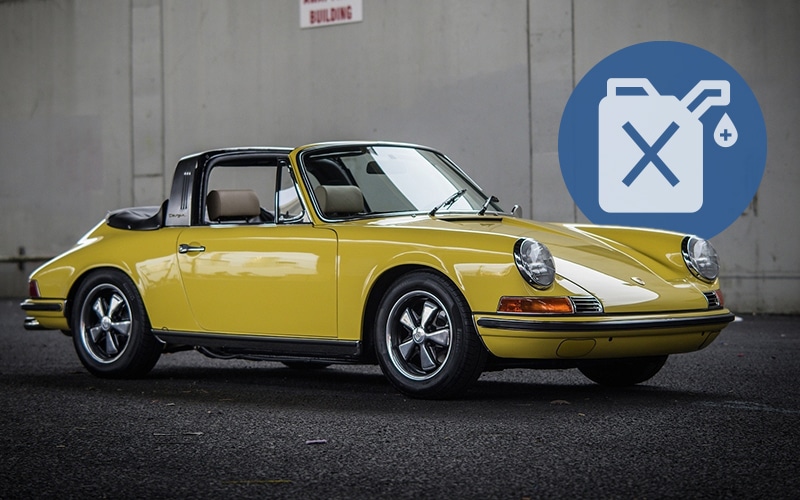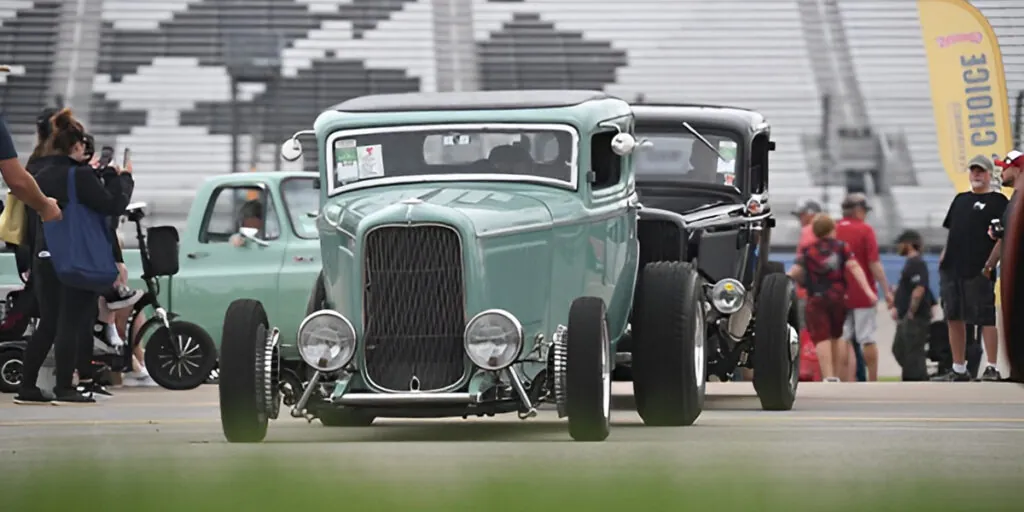When Vic Elford convinced Porsche to lend him a new 911 for the 1966 Tour de Corse rally, it showed up with a support vehicle, a few tools, and enough tires for the event – but no spare parts. In response to Elford’s worries, Porsche competition director Fritz von Hanstein replied, “Vicky, my boy, there are no spares. Porsches don’t break.”
As a classic Porsche owner, you might have your own opinions about that statement – but one thing which we can all agree is: Porsches need careful and diligent maintenance if they’re going to deliver the performance for which they’ve become famous. To help you in that crucial mission, we’ve collected some of the most important maintenance tips for Porsches from the air-cooled era. Whether your weekend warrior is a 356 or a 917, these will help you preserve the truth in Fritz von Hanstein’s confident declaration.
Oil: The Lifeblood of Any Air-Cooled Porsche

We like to say that the 356 and its descendants are “air-cooled”, because there’s no radiator and much of the heat is removed from the engine via both natural and forced airflow. That’s only part of the story, however. Porsches also rely on oil flow to disperse heat. In certain models, oil accounts for up to half of the heat removed from the engine. That’s one of the reasons these cars have always had advanced, racing-style oiling systems, often including a dry sump.
The intense amount of heat put into these oil systems, plus the relatively enthusiastic driving often exhibited by Porsche owners, tend to put significant stress on your oil. So, think of it as the lifeblood of your car, and treat it appropriately. If you have an oil level gauge in your car, start by confirming that it reflects reality; if not, calibrate or replace it. Don’t have an oil level gauge? Learn to do the check. In a 356, it’s as easy as checking the oil in a Chevy truck – easier, in fact since you don’t need to reach very far to get to the dipstick. 911 and similar models are a bit different. You’ll want the engine fully warmed up and running for at least 30 seconds, which allows the dry sump system to distribute the oil. Then you can check.
How often should you check? Every 500 miles wouldn’t be too often, believe it or not. The four-cylinder engines are not considered fully sealed by modern standards and can often burn through a quart in a thousand miles even if they are obsessively maintained. If your car is leaving spots on the ground, consider checking every time you drive. Most classic Porsche owners keep a quart or two of oil in the “frunk”, just in case.
When should you change your oil, and what should you use? This is where the older air-cooled cars are very different from, say, a 1996 993-generation car. When the 356 was new, Porsche recommended oil changes every 1,500 miles with the best 30-weight oil available, extending to 3,000 miles in ideal conditions. That’s still not a bad idea, because these engines don’t heavily filter their oil the way newer Porsches do. If you can stick to that oil change interval, you probably don’t need or even want synthetic oil. But you may want to use a ZDDP additive from Lucas, Red Line, or others.
Six-cylinder Porsches, on the other hand, should be filled and changed according to the factory manual. Be aware that the exact “Group IV” Mobil 1 formula used and recommended by Porsche when many of these cars were new is no longer easy to find, thanks to a court ruling in the United States that changed the definition of “full synthetic” to the lower “Group III” spec. Look for oil that meets the ACEA specification, rather than the American API.
Should you send your oil to an analysis laboratory? While not strictly necessary, a good lab analysis can give you some additional information on the state of your engine – and with air-cooled Porsches this is especially important as the engines can be very costly to repair or replace. At a minimum, however, you should be checking oil frequently and keeping it changed at or more frequently than the original Porsche recommendation.
Additives

The late Bruce Anderson, who was a tireless advocate and source of information for air-cooled Porsche owners, never failed to recommend the use of Techron fuel additive on a regular basis. It was Anderson’s experiments with Techron that caused Porsche to eventually accept and even recommend its use in dealerships. Larger air-cooled six-cylinder engines, such as those fitted to the 1984 Carrera and after, especially benefit from Techron, but pretty much all air-cooled Porsches can see some improvement because they are all subject to heavy carbon deposits on the valves.
Are there other additives that work for Porsches? Most likely – but Techron is the traditional one to use, and the one that shows the most benefit. (Have a modern water-cooled Porsche with direct injection? You probably won’t need it.)
Tires: Don’t Get Tired of Changing Them

One of the most important safety and drivability issues with classic cars is tires that are past their “expiration date”. When a car isn’t driven a lot, it doesn’t put visible wear on the tires – but that doesn’t mean the rubber isn’t degrading and the belts aren’t breaking down. You can have a very new-looking tire at 10 or 15 years of age that nonetheless is not safe to drive.
Add in the performance capabilities, and unique handling characteristics, of an air-cooled Porsche, and it becomes extra-important to keep new, fresh tires under your Stuttgart classic. Looking to change tire or wheel size for additional curb appeal? Talk to a shop with plenty of experience in the matter because something as minor as putting slightly wider front tires on your 356 or 911 can drastically alter the handling balance in ways you wouldn’t expect.
Just as important as tire age: tire pressure. Buy a standalone inflator and use it every time the car has sat for more than a week or so. You’d be surprised how quickly a fifty-year-old wheel can leak air, even when there’s a brand-new tire on it.
Sun, Water, and Air

Keeping your Porsche out of the sunlight whenever possible does more than just protect the paint. It increases the life of critical rubber parts and reduces the amount of “heat cycling” the car goes through on a daily basis, which in turn, can extend the life of bushings, seals, and other wear items. And while classic Porsches aren’t “Gremlins”, whether we’re talking the don’t-feed-after-midnight kind or the rust-prone AMC kind, it’s best to not get them wet too often. If you drive the car in the rain, or leave it out in the rain, consider a periodic check under the “frunk” carpet and elsewhere for moisture and rust. Finally, consider the humidity level where your Porsche is stored. An air-conditioned facility will extend the life of your car in ways you won’t expect, like less degradation to plastic knobs.
Learn Your Quirks
Every classic Porsche has “quirks” that are specific to that model, year, or combination of both. Here’s an example: Every 993-generation owner should keep a spare DME relay in the glovebox, as DME relay failure can strand the car without warning. Do you have a sunroof coupe or a Targa? Learn where the drains are, and keep them clear, because neglecting this task can lead to rust and corrosion that is extremely difficult to reach and repair. The best places to learn these quirks are on model-specific forums and owner groups. And it goes almost without saying that every Porsche owner should at least be aware of the PCA (Porsche Club of America), if not an enrolled member.
If you stay on top of your maintenance and keep your Porsche in good clean condition, you might be surprised at how reliable it can be, even to odometer readings that would have the owners of most classics planning their second rotisserie restoration. If you don’t keep an eye on things, you’ll quickly learn how expensive, and how rare, some of the parts for your classic Porsche can be. In general, however, these are good and solid cars built better than average and designed for a long life. For the record, Fritz von Hanstein was right about Porsches – at least in the case of the 911 used by Vic Elford in 1966, which held on for a podium position. The cars built alongside that 911 can still give good service today, which is impressive no matter how you slice it. Just make sure you do your part!



